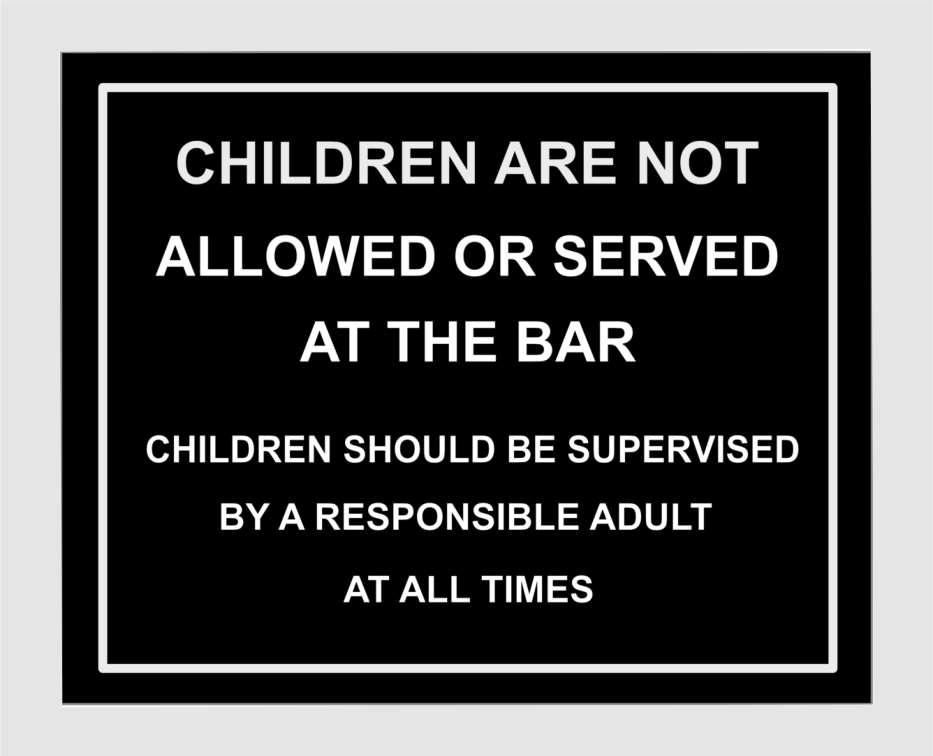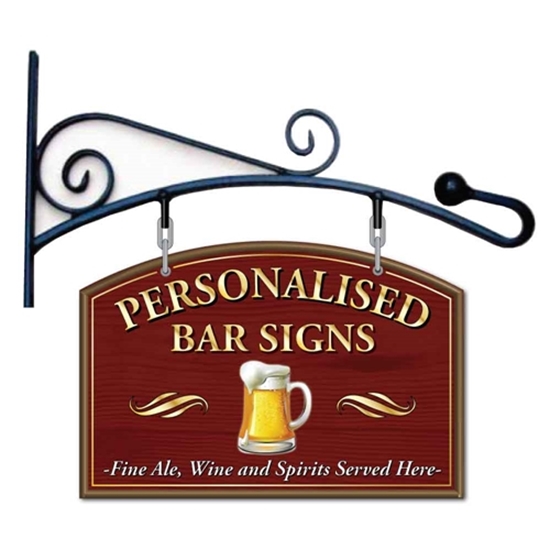Recommended Ideas For Picking Personalised Pub Signs
Wiki Article
What Is The Difference Between Bar Signs In Size?
The size of bar signs varies according to their function as well as their location and aesthetics. Here's a look at how bar sign sizes impact their functionality and aesthetic appeal:1. Large Signs
Use for: to bring attention to an region and to serve as a focal area.
Signs used for exteriors that are main branding signs, or walls with features.
Placement - Most often put outside, above huge entrances or on large walls to attract patrons.
For example, large neon signs, or vintage-style or large mural-type signage.
2. Medium Signs
Uses: Give details or decorate the room without taking over.
Uses for: Displays of menu boards, directional signs as well as promotional display.
The position is chosen in a way that it is visible but does not overwhelm, for example behind the bar or over seating areas.
Examples include medium-sized chalkboards for daily specials, metal signs bearing the bar's logo or themed signs.
3. Small Signs
Useful: To add subtle decorative elements or offer specific details.
Uses: Table sign or small decorative pieces.
Placement : on tables or shelves, or in displays in which close-up viewing is expected.
Small quotes or drink menus as examples.
Size Aspects
Visibility
Signs that are big They can be observed from a distance and draw attention of passers-by. They also indicate the presence of a bar.
Medium signs: Delivers vital information in a small space, without overwhelming the decor.
Small Signs are best to provide information in close proximity and intimate specifics. This will improve the experience of customers.
Proportion
Large Signs: Should be proportional to the size of the space to prevent overwhelming smaller areas. The best choice for spacious or open spaces.
Medium Signs: It's a good fit in the majority of interior spaces, offering versatility in installation.
Small signs: Ideal for adding detailed accents and fitting into tighter spaces without causing clutter.
Impact
Large Signs: Creates a bold statement and can serve as a major branding component. It is used to establish the mood of the bar.
Medium Signs are a good mix of the appearance and the visibility. They contribute to the ambience, and also communicate important information.
Small Signs (Signs) are a great way to add detail and a sense of humour to a visual experience.
Practicality
Large Signs (Large) Large Signs (Large): They require substantial mounting options and are often more costly due to their size.
Medium Signs are easy to install and move, with the flexibility to make design changes.
Small Signs: Easy to update and replace, they are perfect for dynamic settings like bars where menus or promotions are frequently changed.
Functionality
Large Signs : They are designed to increase visibility, attract attention and practicality.
Medium Signs are both functional as well decorative. They communicate important information as well as enhance the visual appeal.
Small Signs: primarily used for detailed information, contributing to the overall design and design in a subtle manner.
The size of bar signage is determined by their purpose, the layout and effect they wish to create on customers. By keeping these elements in check, you can ensure that the signs contribute effectively to the ambience of the bar as well as operating requirements. View the top rated personalised pub signs for blog advice including small pub signs, bar pub signs, bar wall signs, hanging tavern sign, make a bar sign, the staying inn sign, home made bar sign, to the pub sign, bar hanging sign, a bar sign and more.

How Do Bar Signs Differ In Terms Of Mounting And Setting Up?
Bar signs vary in regards to mounting and installation based on their type and size, weight, location and purpose. Here's an in-depth look at the different mounting and installation methods for bar signs:1. The wall-mounted sign
Directly fixing to the wall.
Methods:
Screws and Anchors are used to secure heavier signs (metal and wood).
Adhesive Strips are able to be used to create small signs (foam boards or acrylics) and temporary installations.
Brackets can be used to display signs that protrude over the wall.
Uses: Indoor decor, menu boards, directional signs.
Features: Secure, versatile and allows prominent display.
Disadvantages : Can damage wall It is also it is difficult to move.
2. Hanging Signs
Hanging from ceilings or suspended from ceilings.
Methods:
Chains: strong and flexible great for signs with heavy weights.
Cables : A modern appearance with a sleeker look.
Rods: Provide a rigid support structure.
Uses: Ceiling decor, directional signs, overhead promotional signs.
Benefits: Increased visibility Uses vertical space and can be decorative.
Disadvantages
3. Freestanding Signs
The product's characteristics are The stand isn't attached to anything.
Methods:
A-Frame is foldable and portable often used to promote on sidewalks.
Pedestal Stands: Stable base, ideal for indoor use.
Post and Panel Typically for larger permanent signs.
Uses: Outdoor advertising, indoor directional signs, promotional displays.
Advantages: Portable, flexible and simple to move.
Negatives
4. Window Signs
Features: Directly attached to windows.
Methods:
Suction cups are easy to put in, remove and are suitable for signs with lighter weights.
Adhesive vinyl is ideal for decals and graphics, it can be applied directly on glass.
Static Clings are permanent but not permanent. They can be reused and they are easy to remove or install.
Uses include: promotional messages, branding, and hours of operations.
Benefits: Large windows and extremely visible from the outside.
Disadvantages include: limited size windows, sunlight can affect performance.
5. Signs that are edge-lit or backlit
The sign's characteristics include the integration of lighting into the sign structure.
Methods:
Wall Mounting with Electrical Connections Requires secure attachment and electrical hookups.
Suspended by Power Cables Suspended with Power Cables: Combining hanging technique and integrated lighting.
Utilizes: Branding with high-visibility Menu boards, decorative elements.
The benefits include increased visibility and attractive lighting.
The installation process is complex and requires additional electricity.
6. Temporary and portable signs
Features: Simple to install and take off.
Methods:
Pop-Up stand is light and collapsible.
Banner Stands: Roll-up or retractable designs.
Uses: Promotions and events Decoration for seasonal events.
Benefits: Easy transportation and fast setting up.
Advantages: Not as durable, may not be as stable.
7. Magnetic Signs
The characteristics of magnetic force are employed to attach objects.
Methods:
Magnetic Strips: Attached on the back of signs.
Magnetic Boards: Signs are attached to a metallic surface.
Uses for: Temporary notices, menu boards that can be altered.
Advantages Easy to change. No permanent fixtures are required.
Advantages: Limited to magnetic surfaces, they are less secure.
8. Projection Signs
Make use of light to show a text or image.
Methods:
Projectors mounted on mounts can be affixed securely to walls or ceilings.
Portable projectors are placed on a stand or a surface.
Displays with dynamic content are used to promote events, promotions and other promotions.
Benefits: Content can be changed easily, and no physical signage is required.
Advantages
Tips for Mounting and Installation
Weight and Size
Heavy Signs: These require stronger solutions for mounting, including anchors and screws.
Light Signs: You could employ simpler methods, such as adhesive tape or suction cups.
Durability
Utilize more durable mounting methods to create permanent signs.
Temporary signs: Pick methods that are simple to remove and move.
Location
Indoors: Less worry about weather resistance and more flexibility in the materials and techniques.
Outdoor: requires weather-resistant materials and a secure mounting order to withstand elements.
Aesthetics
Concealed Mounting - Gives a clean appearance by hiding the mounting hardware.
Signs can be enhanced with decorative hardware.
Accessibility
Simple Access to Changes : This is especially important for signs, such as menu boards that need regular updating.
Security: Signs shouldn't be easily taken or altered with.
With these considerations, bar owners can choose the best mounting and placement methods that best suit their specific needs, ensuring your signs are safe and visible. They should also be in line with their bar's aesthetic and functional requirements. Check out the recommended enquiry on bar signs for home for website recommendations including large personalised bar signs, personalised bar signs, personalised bar signs, pub signs for garden bar, personalised metal bar signs, personalised pub, large bar signs, bar sign design, bar pub signs, personalised metal bar signs and more.

What Is The Difference Between Bar Signs That Are Interactive And Other Bar Signs?
The interactivity of bar signs may vary to draw customers and enhance their experience. Below are the distinctions between bar signs in terms of their interactive capabilities. Static signs
Traditional Design: Static signs relay information with no interactive elements.
Common examples include posters printed, painted wall murals, and the standard neon signs.
2. Digital Displays
Digital Signs can be used to display multi-media content and live-time animations.
Touchscreens are interactive and can display games, promotional material, menus, or other information.
Benefits include: Draw attention to information that is dynamic while encouraging patron engagement.
3. QR Codes
QR Codes on Signs QR codes on signs can be used to connect to promotions, menus or social media profiles.
Benefits: Easily access to information on promotions, further information or loyalty programs.
4. LED Screens
LED screens can be used for displaying scrolling text or animations.
Displays that are touch-enabled on LEDs allow viewers to interact with their contents. This includes choosing menu options or playing games.
Benefits: Draw attention, communicate information clearly and provide engaging experiences.
5. Projection Mapping
Experience the immersive experience of projection maps Projection maps transform surface into interactive displays and dynamic visuals, offering storytelling.
Interactivity - Guests are able to interact with projected elements such as interactive games or virtual experience.
Benefits: Increase the ambiance and promote social interaction.
6. Augmented Reality
Enhanced Reality: AR overlays digital content onto the physical world offering interactive experiences.
Signs with AR capabilities: AR signs allow customers to interact and see virtual elements like cocktail recipes or virtual games.
Benefits: Set your bar apart from other bars by providing distinct experiences that are engaging for patrons and creating a buzz.
7. Motion Sensors
Responsive Signage: Motion sensors detect motion and trigger interactive responses on signs.
Interactivity Signs react to patron movements by displaying animations or altering the content. They can also provide specific messages.
Benefits : Increased participation, more immersive environments, and surprising and delighting patrons.
8. Social Media Integration
Online Interaction: Signs may feature social media handles or hashtags in order to encourage customers to participate on the internet.
User-Generated content: Encourage customers to share photos of your signage on social media, increasing the visibility and reach of your bar.
Benefits: Increase the involvement of communities, boost brand awareness, and generate content that is created by users.
9. Interactive Lighting
Dynamic Effects - LED or neon signs that respond to sound or touch, or even motion.
Signs are interactive and can change the colors as well as brightness levels or patterns, depending on how people interact with them and the surroundings.
Benefits: Create immersive atmospheres which enhance ambiance, as well as attract the attention of.
10. Gamification
Signs with Interactive Games and Challenges: These signs include interactive games and challenges that entertain the patrons and encourage them to participate.
Reward: Give discounts or other incentives for players who meet challenges or who win games.
Benefits : Increases time of stay. Foster social interaction. Promote repeat visits.
Bar owners who incorporate interactive elements into their signage will create an engaging experience that will capture the attention of patrons, boost brand recognition and distinguish their business from a highly competitive market. See the top rated https://twofb.com/ for website recommendations including personalised home pub sign, bar hanging sign, make your own bar sign, bar signs for garden, the staying inn pub sign, large bar signs, bar sign design, outdoor personalised bar sign, garden bar signs, personalised metal bar signs and more.
